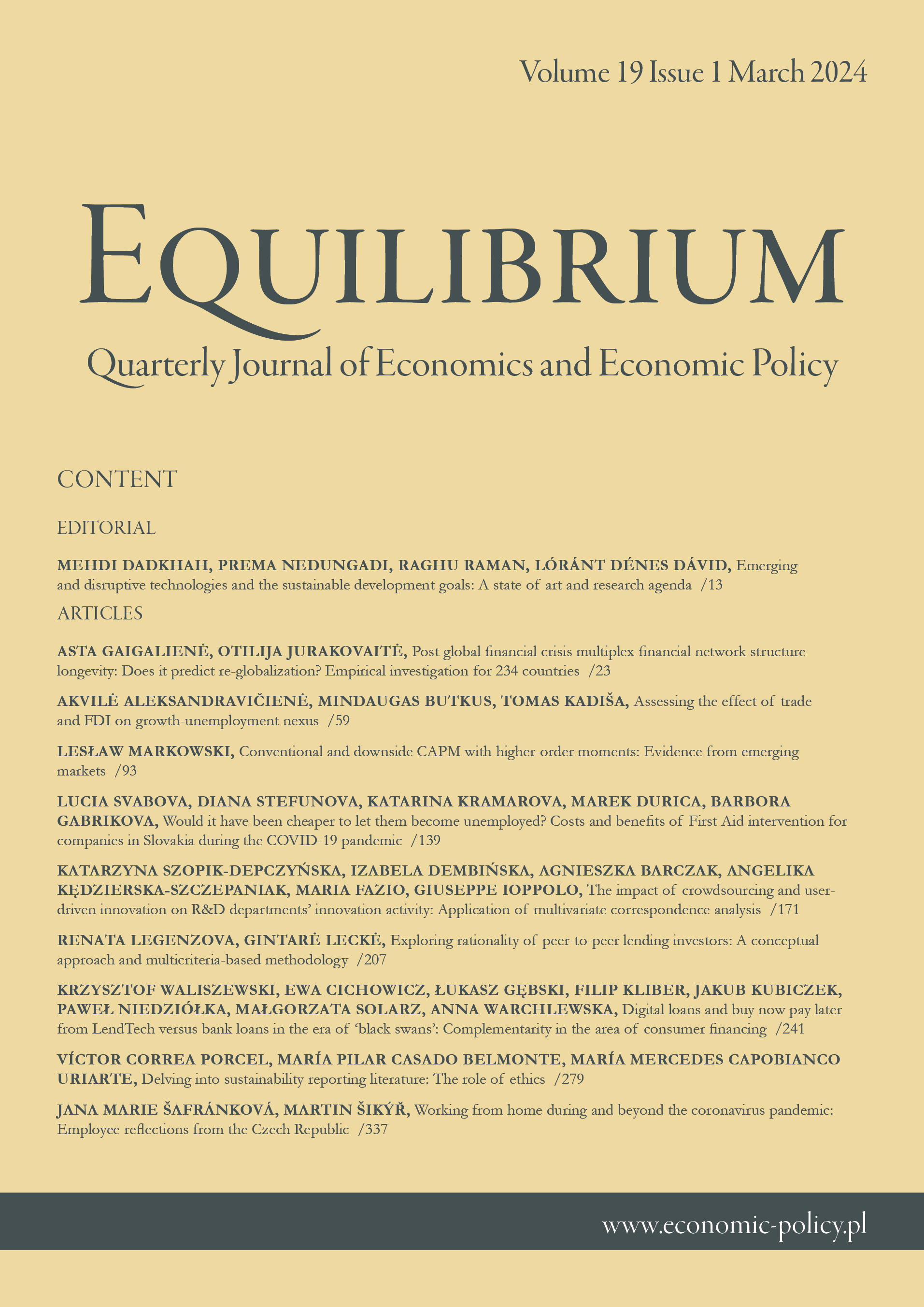Macroeconomic imbalance procedure (MIP) scoreboard indicators and their predictive strength of “multidimensional crises”
IF 6.2
Q1 ECONOMICS
Equilibrium-Quarterly Journal of Economics and Economic Policy
Pub Date : 2020-03-31
DOI:10.24136/eq.2020.001
引用次数: 7
Abstract
Research background: The evaluation of the predictive strength of MIP indicators in relation to crises is extremely important for the process of coordinating the economic policies of the EU countries. MIP is one of the pillars of the economic crisis prevention procedure. Predictive power of individual indicators has not been tested before their introduction. Purpose of the article: Evaluation of the predictive strength of fourteen MIP indicators in relation to multidimensional crises in the EU countries. Methods: We used ordered probit model to test the ability of MIP indicators to correctly predict episodes of “multidimensional crises” (as defined by the authors) in the period between 2008 and 2017 in all EU Member States. Findings & Value added: We defined “multidimensional crises”, combining several negative phenomena into one limited dependent variable. This work is also novel in its application of probit regression to test the predictive strength of MIP indicators with an ordered probit model. We identified five MIP variables which were statistically significant in predicting “multidimensional crises” for all EU countries: net international investment position, nominal unit labour cost index, house price index, private sector credit flow and general government gross debt. Other variables turned out to be less important or not effective in crises prediction.宏观经济失衡程序记分牌指标及其对“多维危机”的预测力
研究背景:评估MIP指标对危机的预测力对于协调欧盟国家的经济政策至关重要。MIP是经济危机预防程序的支柱之一。单个指标的预测能力在引入之前尚未经过测试。文章目的:评估14项MIP指标对欧盟国家多层面危机的预测强度。方法:我们使用有序probit模型来测试MIP指标正确预测2008年至2017年期间所有欧盟成员国“多维危机”(由作者定义)的能力。研究结果和附加值:我们定义了“多维危机”,将几个负面现象合并为一个有限的因变量。这项工作在应用probit回归用有序probit模型测试MIP指标的预测强度方面也是新颖的。我们确定了五个MIP变量,这些变量在预测所有欧盟国家的“多维危机”方面具有统计学意义:净国际投资头寸、名义单位劳动力成本指数、房价指数、私营部门信贷流量和一般政府总债务。事实证明,其他变量在危机预测中不那么重要或无效。
本文章由计算机程序翻译,如有差异,请以英文原文为准。
求助全文
约1分钟内获得全文
求助全文
来源期刊
CiteScore
9.20
自引率
3.50%
发文量
28
审稿时长
36 weeks
期刊介绍:
Equilibrium. Quarterly Journal of Economics and Economic Policy is a scientific journal dedicated to economics, which is the result of close cooperation between the Instytut Badań Gospodarczych/Institute of Economic Research (Poland) and Polish Economic Society and leading European universities. The journal constitutes a platform for exchange of views of the scientific community, as well as reflects the current status and trends of world science and economy.
The journal especially welcome empirical articles making use of quantitative methods in: Macroeconomics and Monetary Economics, International Economics, Financial Economics and Banking, Public Economics, Business Economics, Labor and Demographic Economics, Economic Development, and Technological Change, and Growth.
Current most preferable topics and special issues:
The economics of artificial intelligence: business potentials and risks;
Digitalization and entrepreneurship in economics;
Sustainable socio-economic development, environmental and ecological economics;
Transition in the energy market (improving energy efficiency, alternative energy sources, renewable energy, energy security).

 求助内容:
求助内容: 应助结果提醒方式:
应助结果提醒方式:


